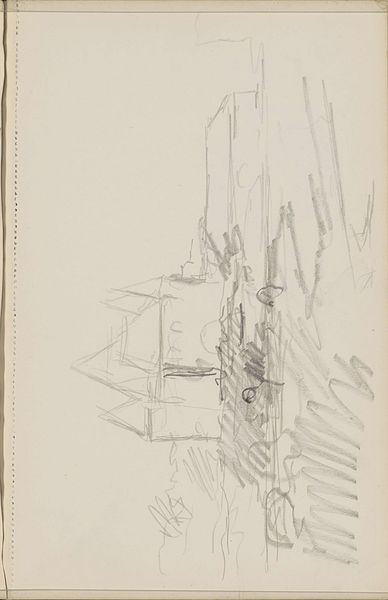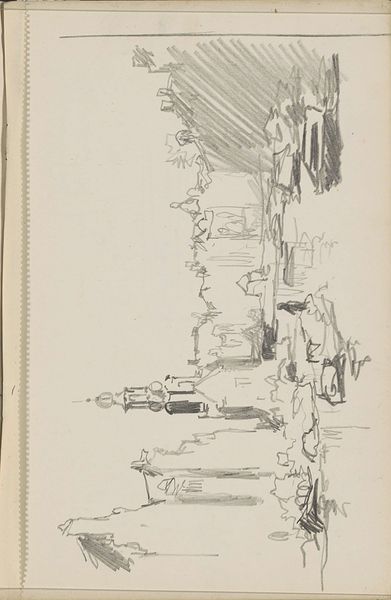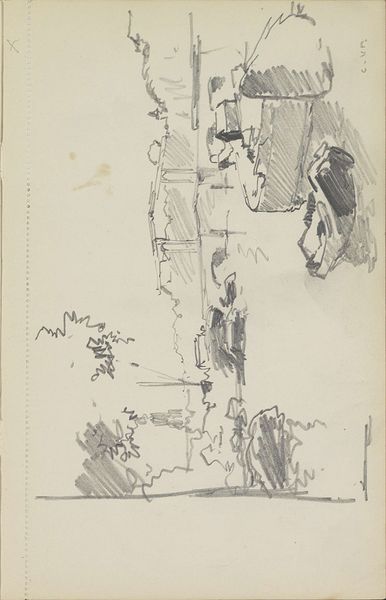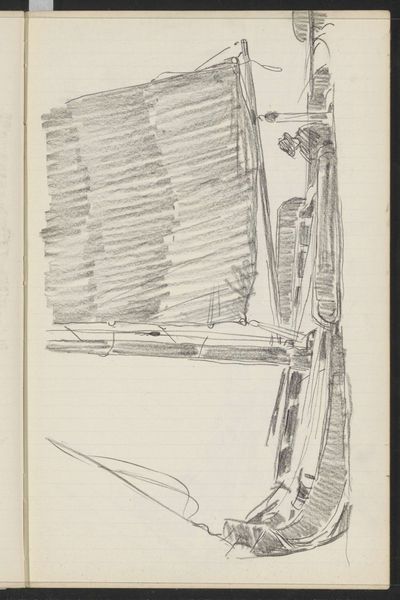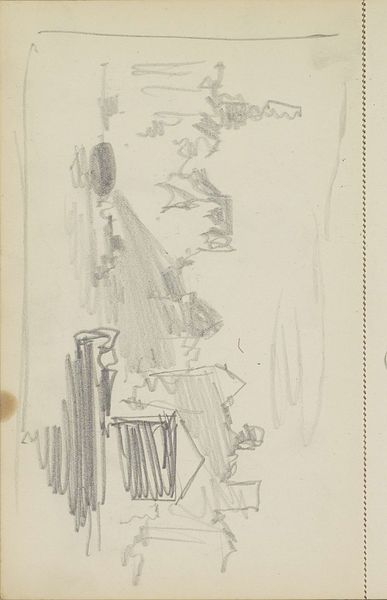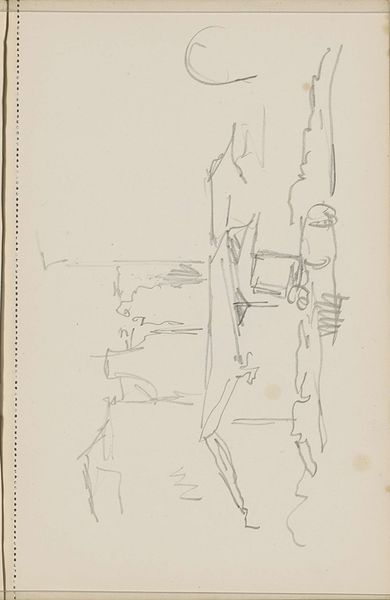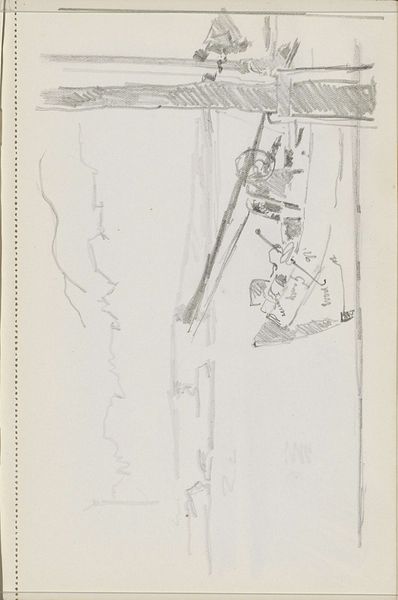
drawing, paper, pencil
#
drawing
#
landscape
#
paper
#
form
#
pencil
#
line
#
modernism
Copyright: Rijks Museum: Open Domain
Editor: Here we have "Zeilboot," a pencil and paper drawing by Cornelis Vreedenburgh, created sometime between 1890 and 1946. The sketchy, almost unfinished quality of the lines gives it a feeling of transience. How do you interpret this work? Curator: Well, considering the time frame of its creation, and the prevalence of maritime imagery, I immediately wonder about its relationship to power, trade, and perhaps even escape. Are we looking at a symbol of Dutch mercantile strength, or could this simplicity point to anxieties around changing socio-political landscapes? Editor: That's a perspective I hadn't considered. I was mainly focused on the pure formal qualities – the line and the light. Curator: And that's valid! But Modernism, particularly during those turbulent years, wasn't just about "form." It was often a reaction to or a reflection of the world's chaos. Look at the starkness of the lines – does that resonate with any feelings of austerity or unrest that might have been present during those times? The unburdened lines of a sailboat contrast against the rising national anxieties as the Netherlands fell to occupation. Editor: I see what you mean. I guess I was hesitant to impose a specific narrative onto what seems like a simple sketch. Curator: The beauty is that it holds both. Vreedenburgh's choice to depict it so sparsely, almost disappearing into the page, encourages us to project our own experiences and interpretations. And that in itself becomes part of the work's evolving meaning. Editor: That makes a lot of sense. Thinking about the historical context really opens up new avenues for understanding it. Curator: Exactly. It reminds us that even the simplest image can be deeply intertwined with complex cultural narratives.
Comments
No comments
Be the first to comment and join the conversation on the ultimate creative platform.

